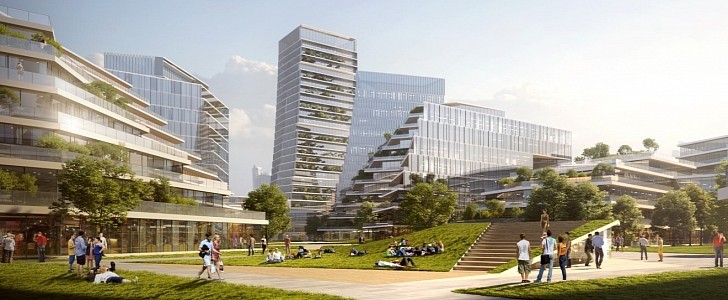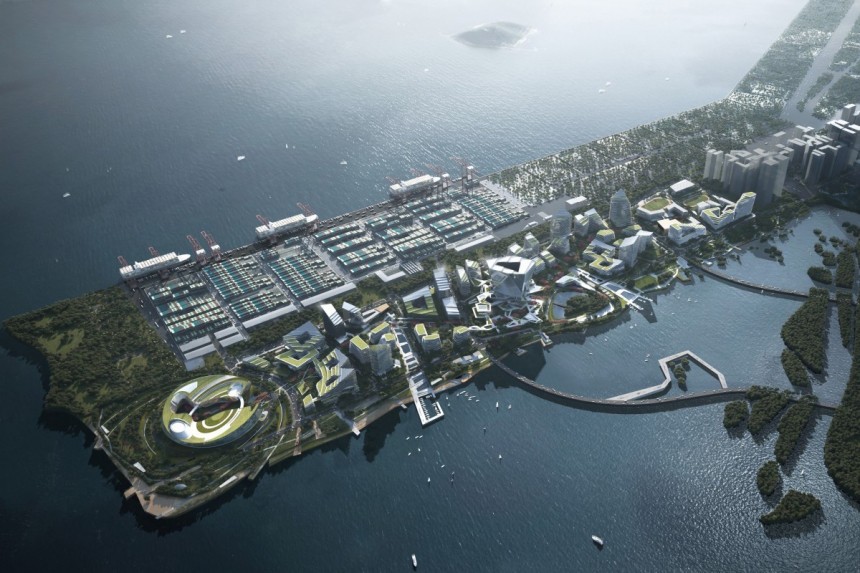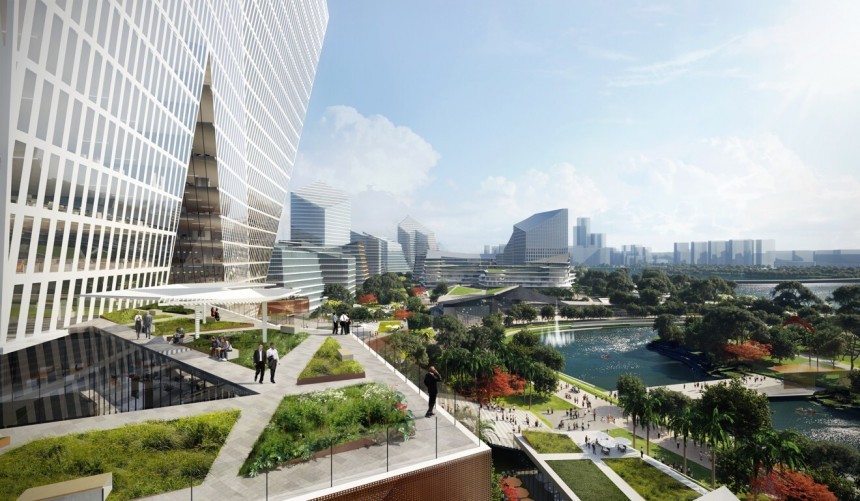The idea of major corporations building “cities within cities” that serve as living laboratories is not new, as neither is that of removing human-operated cars from most of its streets. Net City, Tencent’s latest development, is also one of these projects – but still a very impressive one.
Tencent got into the whole Internet business before the Internet was even a thing, at least in home country China. Today, it is a leading industry figure and, as such, has both the capital and the desire to invest in something not many other companies can: its very own city. It will be called Net City and, yes, it will be almost entirely car-free, except for self-driving vehicles that will be allowed in certain parts.
Net City covers an area of about 500 acres or 22 million square feet (2 million square meters) and will include anything from office buildings to parks and recreational zones, shops, schools and entertainment venues. It will be what you might refer to by the old cliché a “city of the future,” in that it will be interconnected, smart, green and the perfect hub for innovation. Just not the place for cars.
Designed by American firm NBBJ, Net City will be home to about 80,000 people and will serve primarily Tencent, CNN reports. Situated on a stretch of and on the Pearl River Estuary, it will focus on offering dedicated spaces to pedestrians, but will still have some low-speed lanes and bike paths.
The idea for it came from imagining a community in which the boundaries between work and play have been blurred. That’s not to say everything in Net City will be work-centered, but rather that it will foster new relationships and bring the work outside, in order to make it more fun and more rewarding.
“This principle was driven by a love for the industrial age machine. In today’s computer-driven world, we are free to imagine a highly integrated city that brings ‘work, live, play’ closer together to foster more synergy between people,” Jonathan Ward of NBBJ explains to CNN. Apparently, this idea is inspired by the recent shift in the work-play balance due to the international health crisis.
However, Net City won’t be isolated from the rest of Shenzhen. If anything, designers believe that, by connecting it to the rest of the city through bridges, ferries and the subway, people from elsewhere will flock to enjoy the many amenities included.
One such amenity is the promise of very little car traffic, no noise and no pollution. “Our main goal was to provide a place where innovation can really flourish. To do that, we tried to minimize the impact of the car as much as possible,” Ward says. “Going ‘car-free’ is still a little bit challenging in our world, so we spent a lot of time designing the city to be as low-impact as possible, removing (cars from) where they don't need to be and focusing on people.”
The result is an almost entirely car-free city that has a green corridor for public transport, bikes and autonomous cars. This will ensure easy transfer from one point to another, both of people and goods, while removing unnecessary traffic. Moreover, Ward believes that, by encouraging people to walk from the car drop-off to where they need to be, they will now have the chance to enjoy nature or reconnect with another fellow human.
When not taking in the views or socializing, the residents of Net City will be making full use of all technological advances. There will be solar panels set up for sustainable energy and systems to capture and reuse wastewater, among other things.
As for the fact that only AVs will be allowed in the city, that alone should give you an idea of the timeline of this project. Warn estimates Net City will take seven years to complete, but that’s after the design is complete. Tencent wants to bring in different architecture firms to design the buildings, which will have between one and 30 floors, so it could be another couple of years before the blueprints are done.
Toyota’s Woven City at the foot of Mount Fuji in Japan is scheduled to start construction in 2021 and, given that it’s a smaller project, will probably be completed before Net City.
Net City covers an area of about 500 acres or 22 million square feet (2 million square meters) and will include anything from office buildings to parks and recreational zones, shops, schools and entertainment venues. It will be what you might refer to by the old cliché a “city of the future,” in that it will be interconnected, smart, green and the perfect hub for innovation. Just not the place for cars.
Designed by American firm NBBJ, Net City will be home to about 80,000 people and will serve primarily Tencent, CNN reports. Situated on a stretch of and on the Pearl River Estuary, it will focus on offering dedicated spaces to pedestrians, but will still have some low-speed lanes and bike paths.
“This principle was driven by a love for the industrial age machine. In today’s computer-driven world, we are free to imagine a highly integrated city that brings ‘work, live, play’ closer together to foster more synergy between people,” Jonathan Ward of NBBJ explains to CNN. Apparently, this idea is inspired by the recent shift in the work-play balance due to the international health crisis.
However, Net City won’t be isolated from the rest of Shenzhen. If anything, designers believe that, by connecting it to the rest of the city through bridges, ferries and the subway, people from elsewhere will flock to enjoy the many amenities included.
One such amenity is the promise of very little car traffic, no noise and no pollution. “Our main goal was to provide a place where innovation can really flourish. To do that, we tried to minimize the impact of the car as much as possible,” Ward says. “Going ‘car-free’ is still a little bit challenging in our world, so we spent a lot of time designing the city to be as low-impact as possible, removing (cars from) where they don't need to be and focusing on people.”
When not taking in the views or socializing, the residents of Net City will be making full use of all technological advances. There will be solar panels set up for sustainable energy and systems to capture and reuse wastewater, among other things.
As for the fact that only AVs will be allowed in the city, that alone should give you an idea of the timeline of this project. Warn estimates Net City will take seven years to complete, but that’s after the design is complete. Tencent wants to bring in different architecture firms to design the buildings, which will have between one and 30 floors, so it could be another couple of years before the blueprints are done.
Toyota’s Woven City at the foot of Mount Fuji in Japan is scheduled to start construction in 2021 and, given that it’s a smaller project, will probably be completed before Net City.








